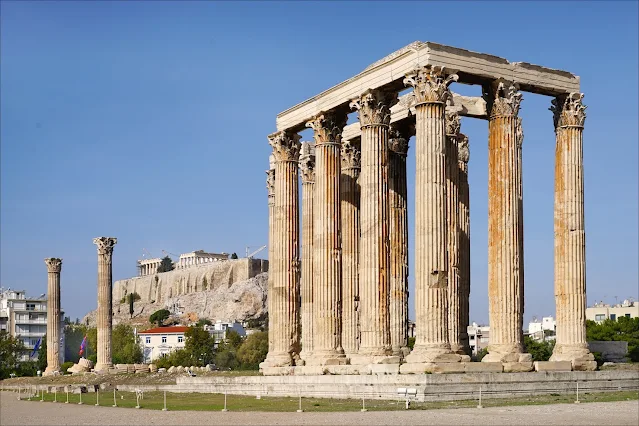When you think of Athens, images of the mighty Acropolis and the iconic Parthenon likely come to mind first—and rightly so. But just a short walk from those ancient heights lies another awe-inspiring relic of classical grandeur: the Temple of Olympian Zeus, or as the locals call it, the Olympieion. While it might not be as famous as its hilltop neighbor, this colossal temple holds stories just as mighty and a charm that quietly stuns anyone who walks among its towering columns.
A Temple Fit for a King of Gods
The Temple of Olympian Zeus was dedicated to Zeus, the king of the Greek gods, and it certainly lives up to his larger-than-life reputation. Construction began all the way back in the 6th century BC under the rule of the tyrant Peisistratos, who dreamed of building a structure grand enough to honor the most powerful deity in the Greek pantheon. But as with many ancient projects, things didn’t go exactly to plan.
Political changes, wars, and shifting priorities meant the temple remained incomplete for centuries. In fact, it wasn’t until Roman Emperor Hadrian came along in the 2nd century AD—over 600 years later!—that the temple was finally completed. Hadrian, a known admirer of Greek culture, didn’t just finish the temple; he added his own statue right next to Zeus’s, subtly linking himself to divine power. Classic Roman move.
The Wow Factor: Just Look Up
Even in ruins, the Temple of Olympian Zeus is nothing short of jaw-dropping. Originally, the temple boasted 104 Corinthian columns, each soaring 17 meters (about 55 feet) into the sky. Today, 15 of those columns still stand tall, with one more lying dramatically on the ground, toppled by a storm in the 19th century. It’s oddly poetic—like the temple is still whispering stories of its long, tumultuous life.
Walking among these ancient giants gives you a real sense of scale—and a new appreciation for ancient engineering. The columns are intricately detailed, and their sheer size makes you feel wonderfully small in the best way possible. It’s a place where time seems to slow down, letting you truly take in the weight of history.
A Peaceful Pocket in the Heart of Athens
One of the things that makes the Temple of Olympian Zeus so special is its location. It's just a stone’s throw from the buzzing Plaka neighborhood and the busy streets of central Athens, yet it feels peaceful and almost meditative. The open space around the temple, filled with greenery and distant views of the Acropolis, offers a quiet moment in the middle of the city’s vibrant chaos.
If you visit during the golden hours of morning or late afternoon, you’ll catch the sunlight dancing on the marble columns, casting long shadows that seem to stretch across time itself. It’s an incredible spot for photography, reflection, or just sitting quietly and letting the weight of history sink in.
Beyond the Columns: A Glimpse into Hadrian’s Athens
While the temple is the star attraction, the surrounding archaeological site includes more treasures. Keep an eye out for the remains of Hadrian’s Arch, which once marked the boundary between the old city of Athens and Hadrian’s new Roman quarter. It’s a powerful symbol of how ancient Athens evolved under Roman influence—and a perfect spot to snap a few photos with both the past and present of the city in one frame.
A Must-See, Often Overlooked
Many travelers rush through Athens on their way to the islands or focus solely on the Acropolis, and while those are certainly highlights, the Temple of Olympian Zeus offers a quieter, more contemplative experience. It’s a place to stand still, look up, and imagine the grandeur of ancient ceremonies, the echo of prayers to Zeus, and the hands that placed each stone with divine ambition.
So next time you find yourself in Athens, carve out an hour for this gentle giant of history. It may not shout for your attention, but it speaks volumes if you’re willing to listen.
Have you visited the Temple of Olympian Zeus? Share your thoughts or travel tips in the comments below—we’d love to hear your story! And if you’re dreaming of more ancient wonders, stay tuned for more blog adventures from the cradle of civilization. 🏛️✨
